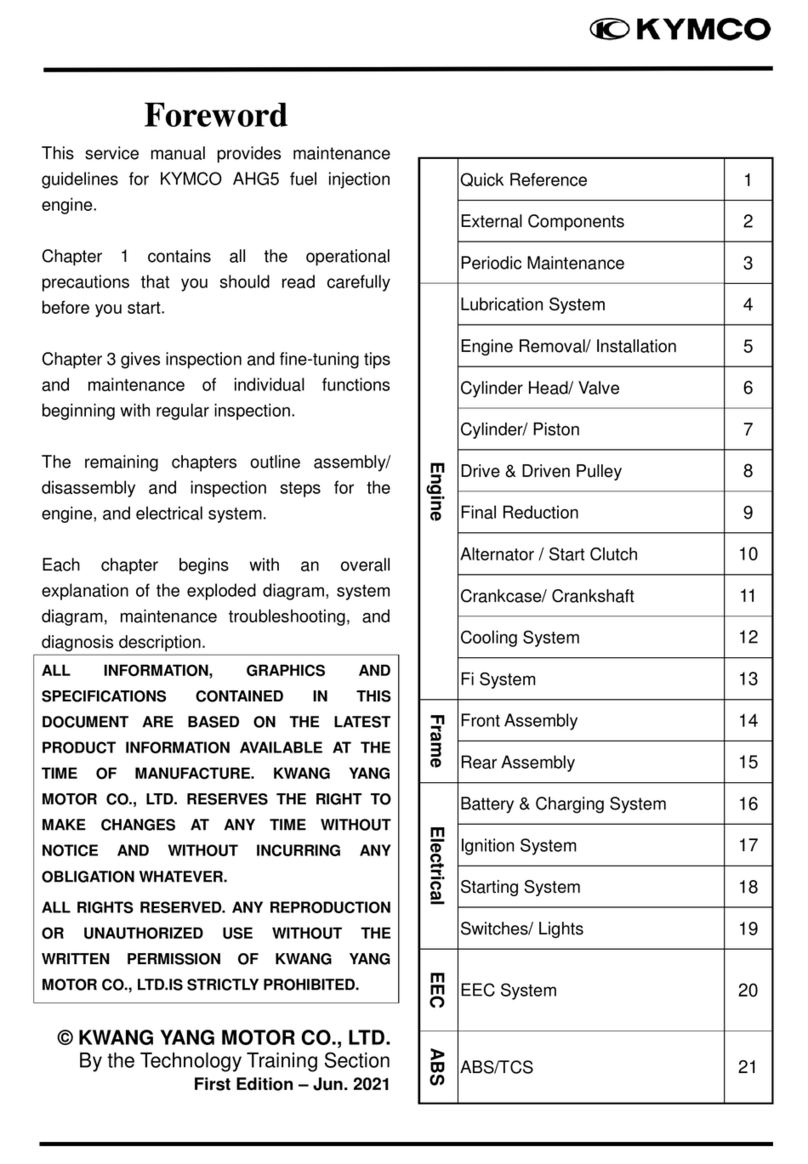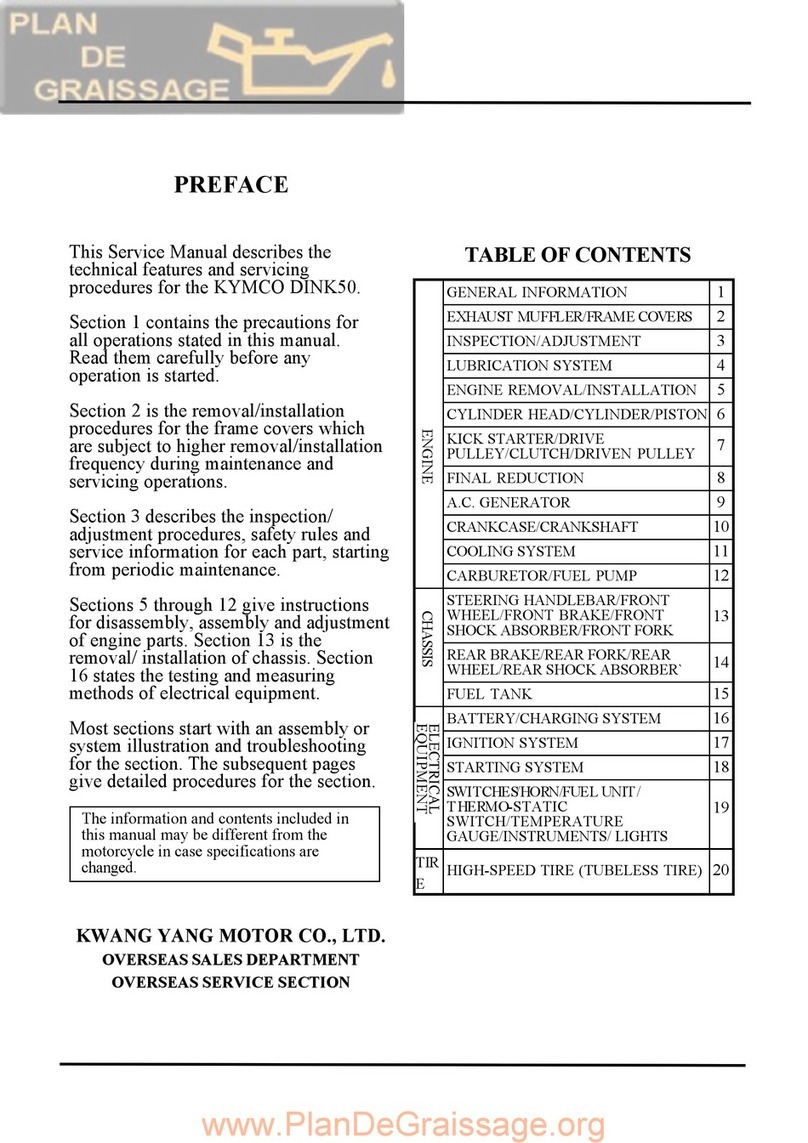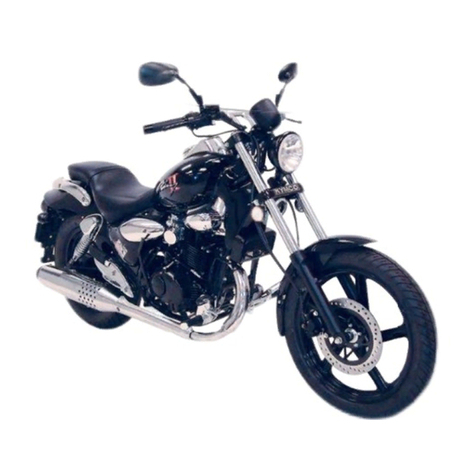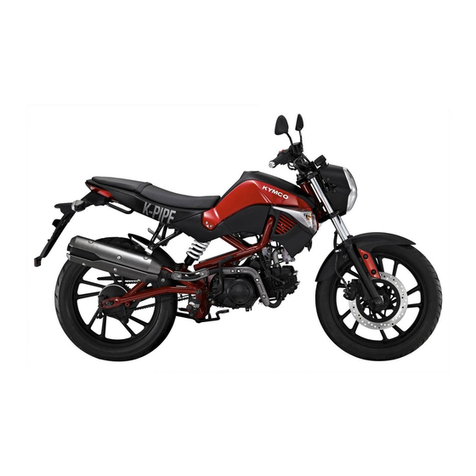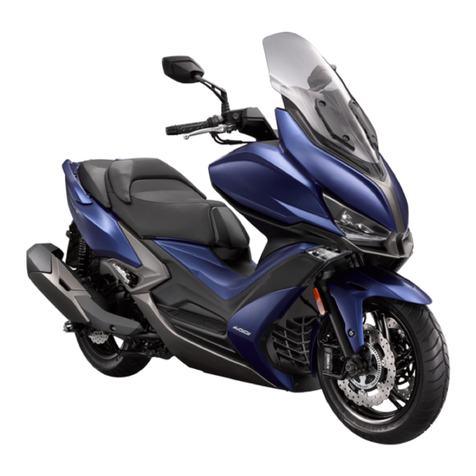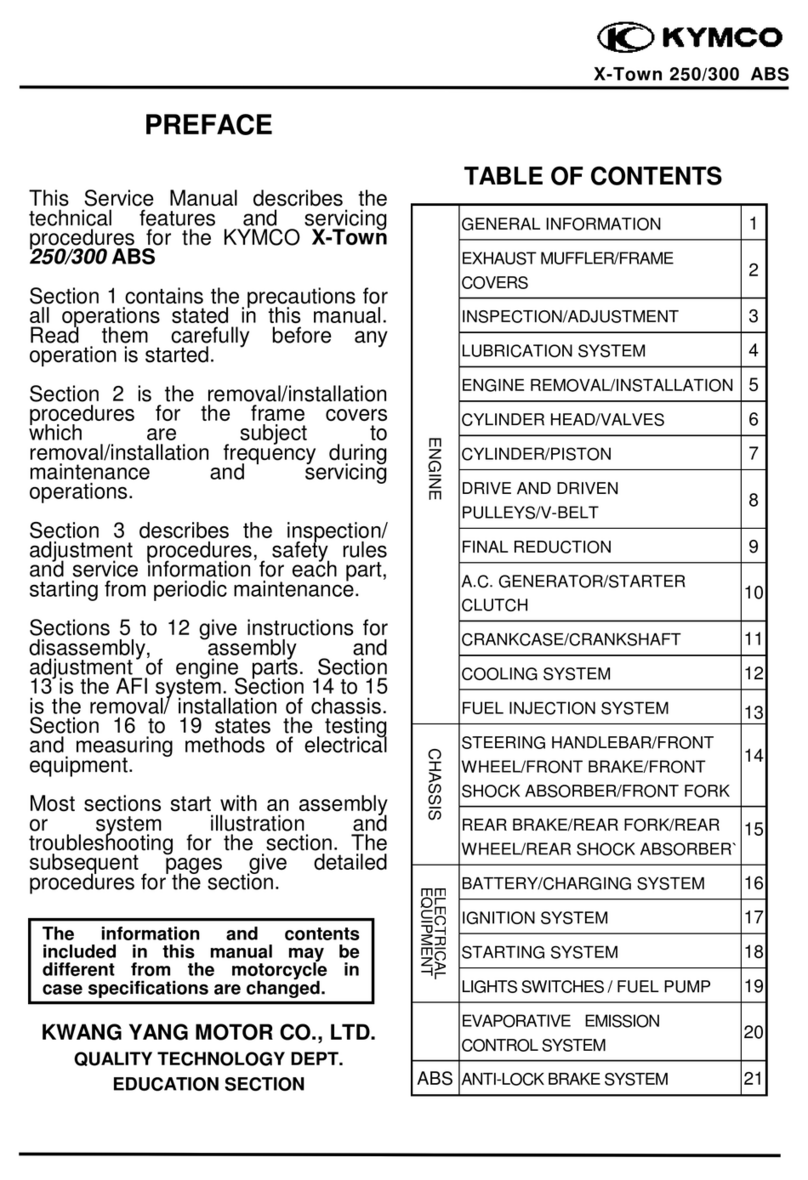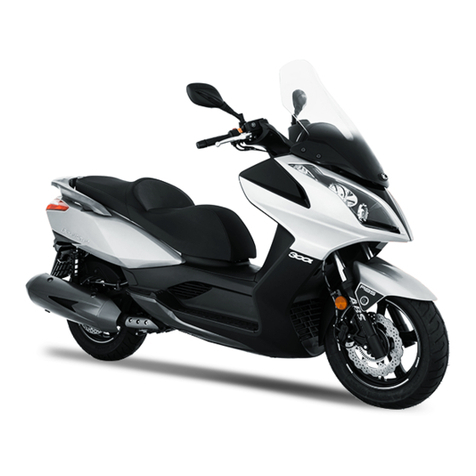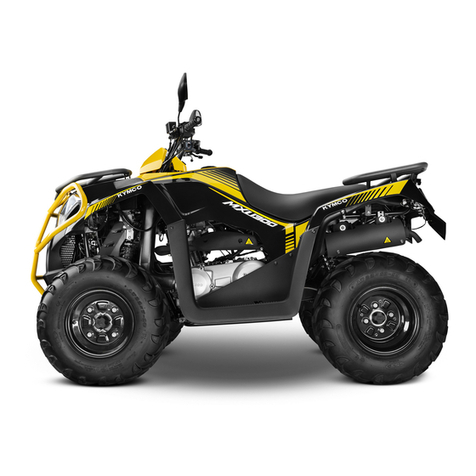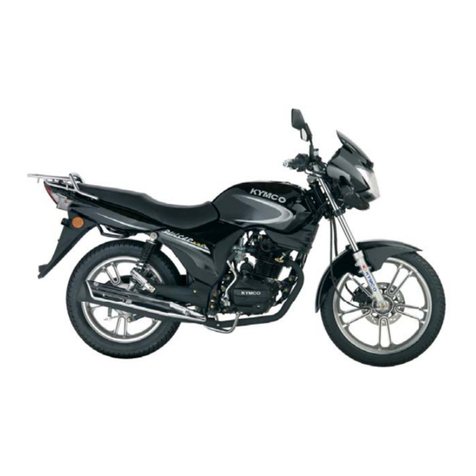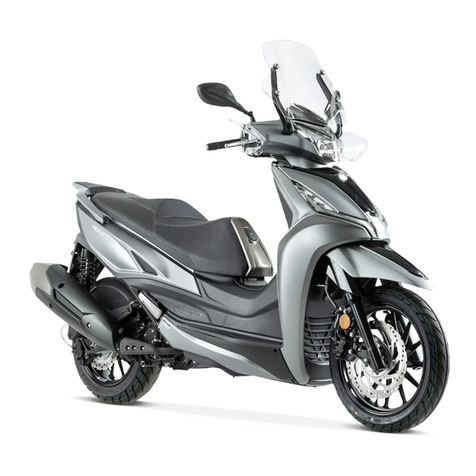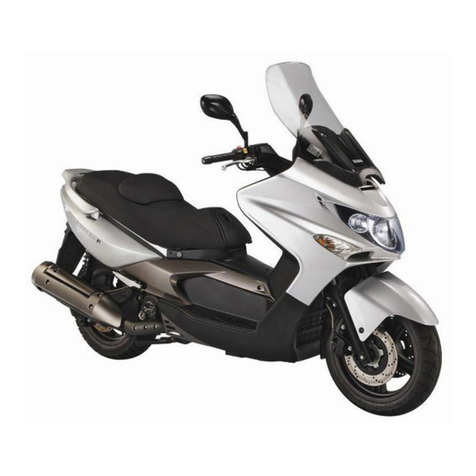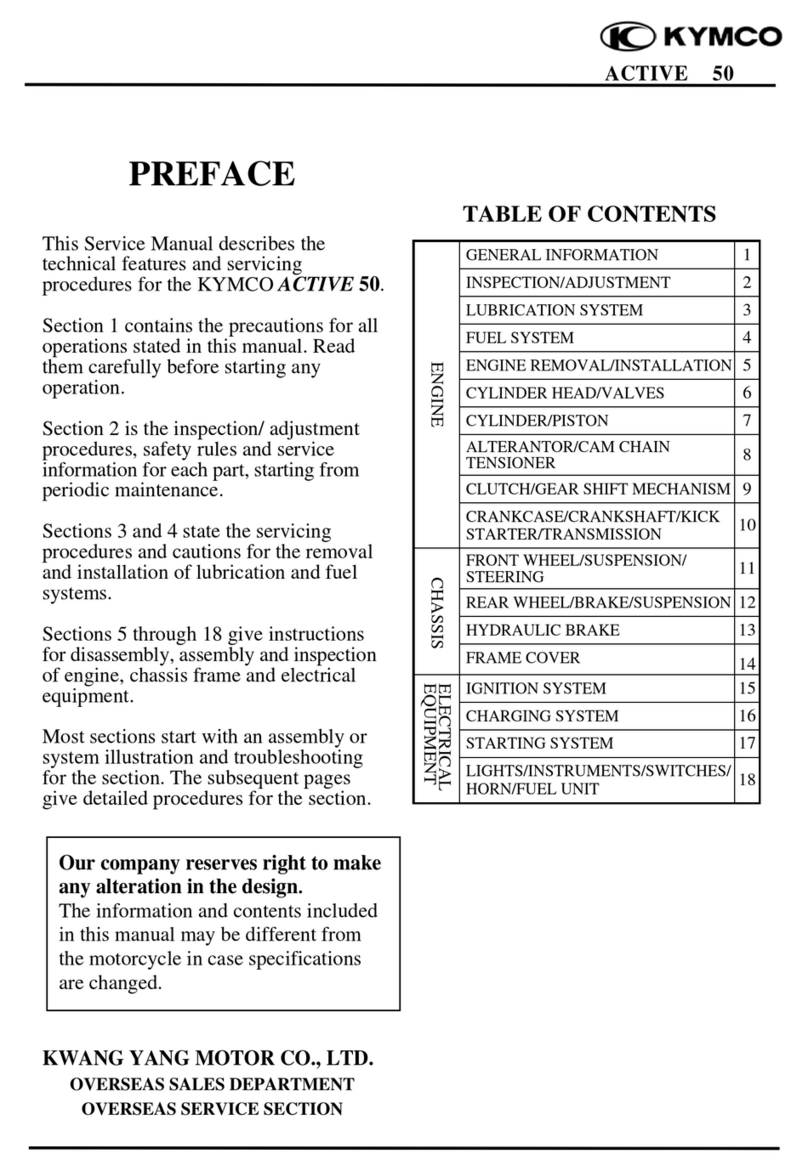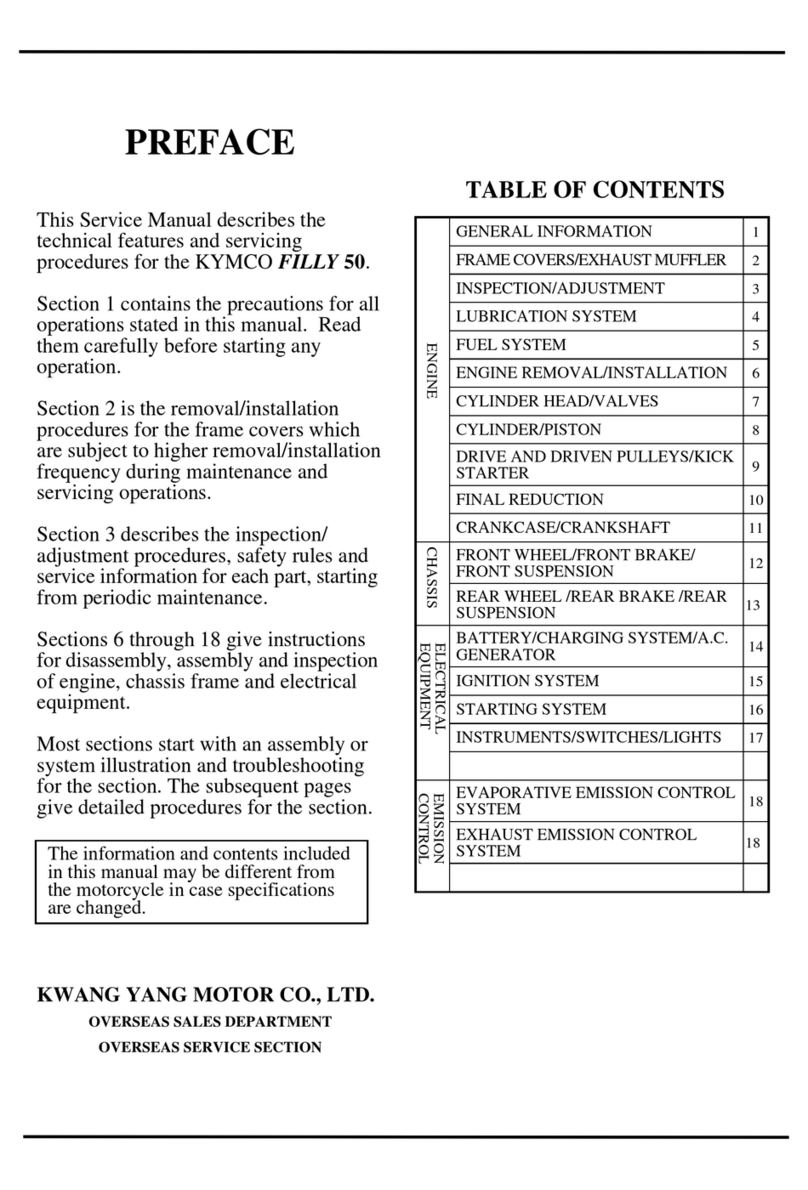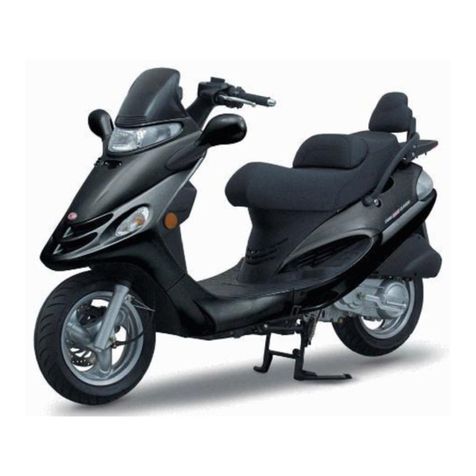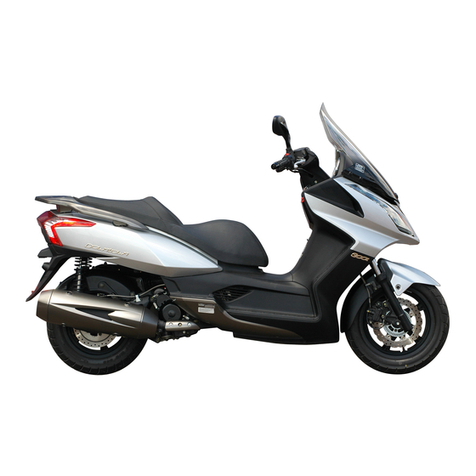1
TABLE OF CONTENTS
SECTION 1 –FORWARD & SAFETY INTRODUCTION ...............2 - 6
IMPORTANT SAFETY INFORMATION........................................................ 3
PROTECTIVE APPAREL.........................................................................4 - 6
SECTION 2 - CONTROLS & FEATURES............................. 7 - 15
LOCATION OF PARTS & CONTROLS....................................................7 - 8
IGNITION SWITCH/STEERING&HANDLEBAR LOCK................................. 9
INSTRUMENTS...........................................................................................10
RIGHT HANDLEBAR SWITCH...................................................................11
LEFT HANDLEBAR SWITCH......................................................................12
SEATLOCK/MET-IN BOX ...........................................................................13
HELMET POSTS......................................................................................... 14
FUEL LEVEL INSPECTION/REFILLING .................................................... 15
SECTION 3 – OPERATION................................................16 - 28
BREAK-IN RECOMMENDATIONS.....................................................16 – 17
TROUBLESHOOTING................................................................................17
PRE-RIDE INSPECTION............................................................................18
STARTING THE ENGINE WITH STARTER BUTTON .......................19 – 21
STARTING THE ENGINE WITH KICK STARTER...................................... 22
RIDING YOUR MOTORCYCLE..........................................................23 – 26
STOPPING &PARKING YOUR MOTORCYCLE ................................27 – 28
SECTION 4 – MAINTENANCE.......................................... 29 – 50
THE IMPORTANCE OF MAINTENANCE...................................................29
MAINTENANCE SCHEDULE..............................................................30 – 31
ENGINE OIL........................................................................................32 – 35
CLUTCH PANEL INSPECTION & ADJUSTMENT .....................................35
AIR CLEANER FILTER ELEMENT............................................................. 36
THROTTLE OPERATION & ADJUSTMENT............................................... 37
DRIVE CHAIN INSPECTION /ADJUSTMENT............................................37
SPARK PLUG.............................................................................................. 38
BRAKE FLUID LEVEL INSPECTION..........................................................39
BRAKE INSPECTION ..........................................................................40 - 41
BRAKE LEVER FREE PLAY INSPECTION & ADJUSTMENT...................41
BATTERY....................................................................................................42
FUSES.........................................................................................................42
TIRES..................................................................................................43 – 45
CHASSIS INSPECTION..............................................................................46
CLEANING.................................................................................................. 47
WASHING YOUR MOTORCYCLE......................................................47 – 48
REMOVING ROAD SALT............................................................................ 48
PAINTED ALUMINUM WHEEL MAINTENANCE........................................ 48
EXHAUST PIPE MAINTENANCE...............................................................48
STORAGE GUIDE................................................................................49 - 50
SECTION 5 - SPECIFICATION...........................................................51
SECTION 6 – EXHAUST EMISSION CONTROL SYSTEM.......52 - 53
